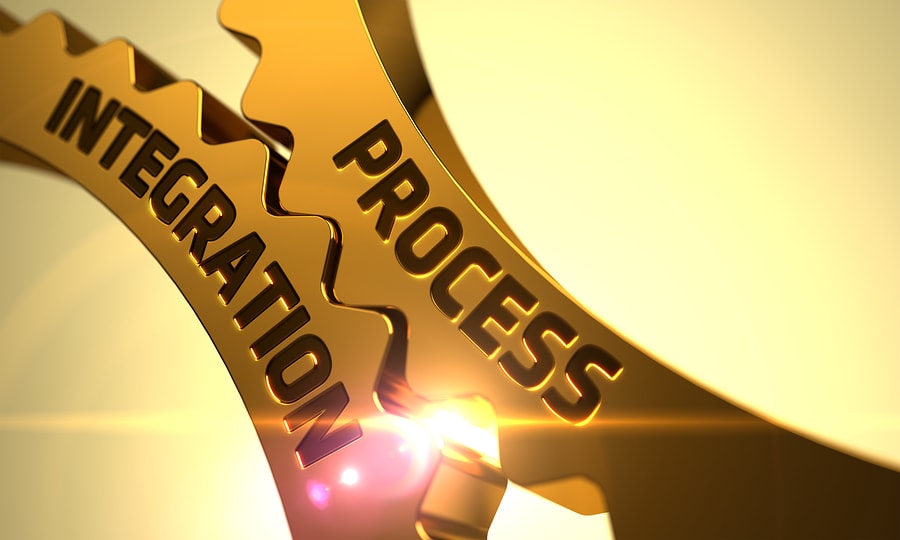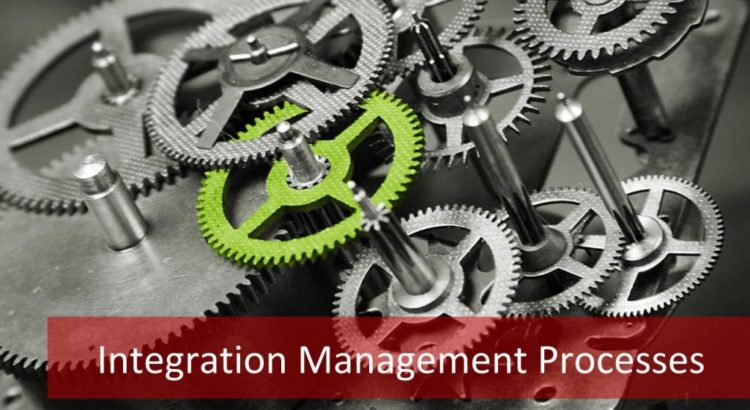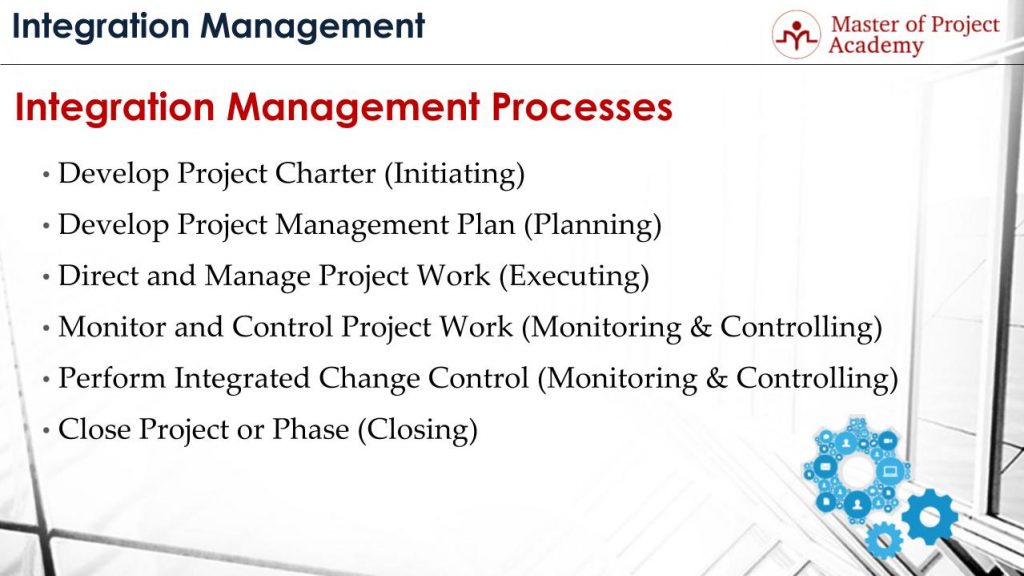To understand how the project life cycle works first, you have to be aware that a project has a complex structure that consists of knowledge areas and process groups. As the PMP training also explains, there are ten project management knowledge areas and five process groups. There is a strong correlation between them because every project management process belongs to a knowledge area and also to a process group. The first project management knowledge area is integration management.
Attend our 100% Online & Self-Paced One-Hour Free PMP Training.
In this particular knowledge area, there are six project integration management processes.
Quick List: See all project management processes
What is the objective?
As seen in the CAPM certification training, each of the project integration management processes belongs to a specific process group. This knowledge area is the only one that has processes in each process group. The main purpose of the integration management is to manage and coordinate all the processes and activities during the project life cycle. It also conducts the project as a whole in order to produce significant outputs. So each of the project integration management processes has another purpose to achieve the main objective.

Now let’s see all the six project integration management processes one-by-one.
Note that, project management processes are documented and controlled by the help of project management templates. You can see sample free project management templates to have an idea of how they work.
What are the 6 project integration management processes?
As we have mentioned above, there are six project integration management processes, all belonging to one process groups. So what are these project integration management processes?
- Develop Project Charter is the first of the project integration management processes. It belongs to the project initiation phase. This process aims to gather high-level project information to produce the project charter. This will help in authorizing the project in the organization. And then, the planning phase will start.
- Develop Project Management Plan is the second of the project integration management processes. It belongs to project planning process group. This process will ensure proper planning of a project also it will help in producing project management plans such as scope management plan, schedule management plan, cost management plan etc.

- Direct and Manage Project Work is the third of the project integration management processes. It belongs to executing process group. This process ensures the deliverables of the project to be produced. Main outputs of the project are produced and delivered to the customer during executing phase. And this process mainly aims to deliver project deliverables.
- Monitor and Control Project Work is the fourth of the project integration management processes. It belongs to project monitoring and controlling process group. Plans are done, execution of the project starts. However, the actual results will not be exactly as you planned no matter how well your project plan is. Deviations and variances from the planned values are measured with the help of monitor and control project work process.
- Perform Integrated Change Control is the fifth of the project integration management processes. It belongs to project monitoring and control process group as well. Changes might be requested due to deviations or variances from the planned values. Or, the customer might require changes to the project, for instance, they can come with a new requirement or change their existing requirement. These change requests are evaluated by the Change control board with alternative solutions and impacts to the project. If changes are approved, these need to be implemented in the project and perform integrated change control process ensures proper implementation of changes in a project.
- Close Project or Phase is the last one of the project integration management processes. It belongs to project closing process group. Once the project is completed, if customer accepted the final product and signed-off the acceptance, if all project objectives are met, the project can be closed officially. Or if it is a phase of a large project, the phase can be closed. Close project or phase process aims to collect and archive all project documents, make all remaining payments to the suppliers etc.

So in this article, we have briefly seen the project integration management processes, in which process groups they belong to and their main aims. You can find further information about these project integration management processes when you enroll in a PMP course.




2 thoughts on “Project Integration Management Processes: Learn the Importance of Project’s Gear Wheels”
Comments are closed.